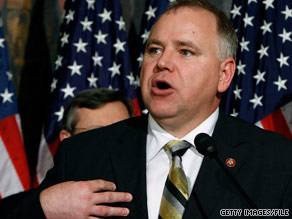
Minneapolis failed to follow two policies established for calling the National Guard for help in a large-scale disturbance, according to one review, commissioned by the city. Several after-action assessments of the riot response also describe the breakdown in communication between government officials in charge of the response. Walz's office also told Frey that a verbal ask isn't an official request for calling in the National Guard, Tschann told the Star Tribune after the riots.

In 2020, Tschann told the Star Tribune that Frey didn't provide adequate information to give the Guard a mission - including the need for soldiers specifically at the Third Precinct location. "This was an all hands on deck emergency that required local, state and federal officials working together to restore order and ensure public safety," he said. In a statement, Walz spokesman Teddy Tschann said Milley and Esper advised Walz as they "worked together to assemble the massive response necessary to quell the unprecedented level of unrest." "He did not say yes," Frey said of Walz in a Star Tribune interview in the months after the riots. In previous comments, the Mayor said he asked Walz to send in the National Guard on May 27 - the night before the precinct fire - after Police Chief Medaria Arradondo informed him that looters had broken into a Target across the street. Walz and Frey declined requests for interviews. "That's how any state will tell you it goes." "The governor's office directs the National Guard to respond - when and where," he said. By then, most of the rioters were gone, and the precinct had been burning for hours.Īsked about the delay, National Guard Bureau spokesman Rob Perino said Walz was in charge of the deployment timeline. Paul, but the Guard didn't arrive to the south Minneapolis area of the Third Precinct until almost 4 a.m. Soldiers were sent to other locations, including the Capitol in St.

The National Guard was not on scene that afternoon. "Right now: anticipate 200 for multiple days." "Once we get our mission set from MPD I'll follow up," he said. He said state police and other departments were already supporting Minneapolis through mutual aid agreements, "so we are the reserve of the reserve." "We have worked with Minneapolis PD before - we supported them extensively during super bowl 52 in 2018 - we know their leadership and they know us," Jensen said. Jensen said they were still waiting on orders from Minneapolis police and Walz, and they were storing guns and ammo in the Arden Hills armory. Soldiers were setting up command stations in Monticello, Stillwater and Arden Hills. In the meantime, Jensen said, he'd just mobilized 50 members of a quick reaction force to support Minneapolis police. Walz wanted to set up a meeting with the Secretary of Defense that morning. of the Minnesota National Guard Jon Jensen wrote to the Pentagon at 8:30 a.m.

"After last night's violence, things have been accelerated by the state Director of Public Safety," Adjutant Gen. The emails show the Guard was ready the morning of May 28 - more than 12 hours before the first Molotov cocktail shattered inside the precinct - and expected to be deployed by "late afternoon." In the months after the riots, Walz, Mayor Jacob Frey and other public safety officials deflected blame onto the others over questions on why it took so long to deploy the National Guard. "By the time the National Guard even came, most everything had quieted down." "We were abandoned," an unnamed local government official told authors of a Wilder Research report commissioned by the state to assess what went wrong. By the next morning, President Trump was threatening to send in the military as a show of strength. Tim Walz would later lament the city's "abject failure" to get the riots under control. The Pentagon emails - which The Minneapolis Star Tribune obtained recently in a Freedom of Information Act lawsuit - provide a new glimpse into the behind-the-scenes communiques leading up to the response to the unrest.


 0 kommentar(er)
0 kommentar(er)
